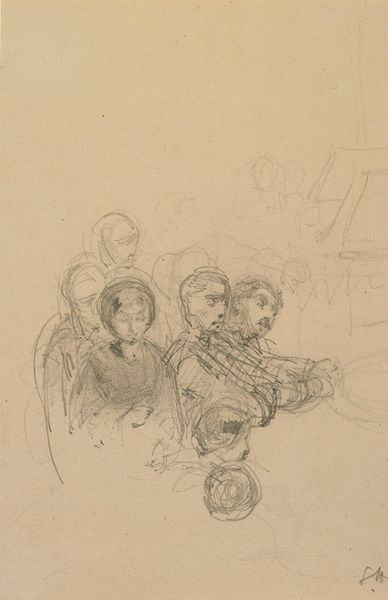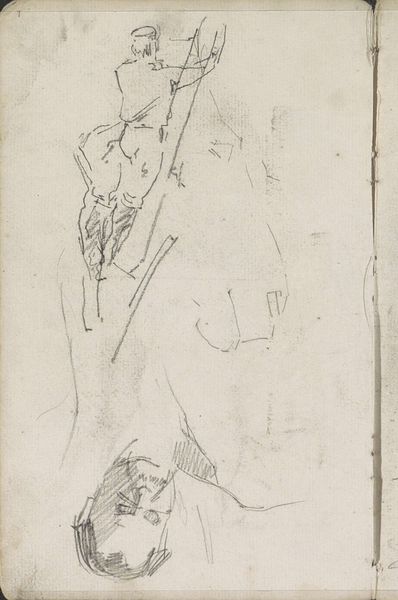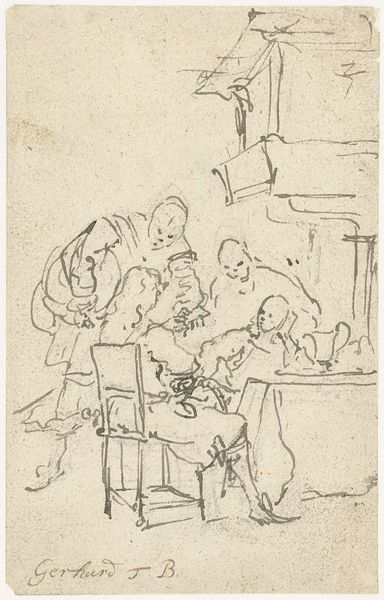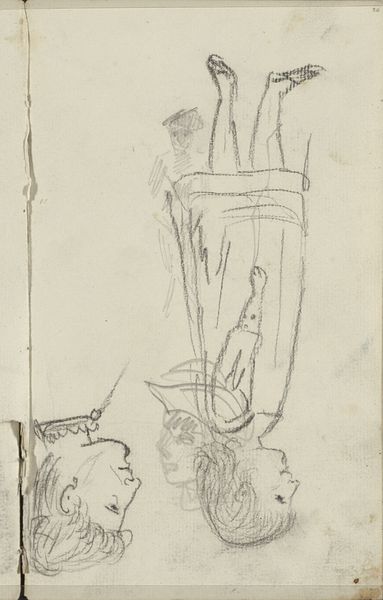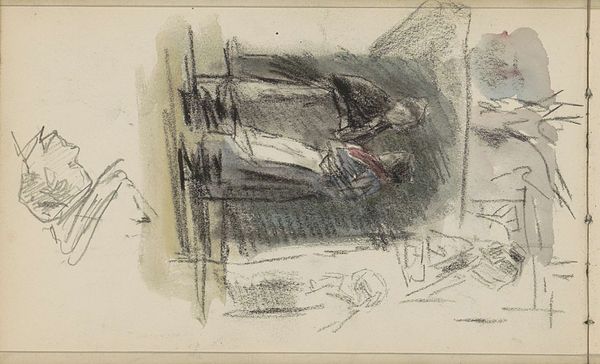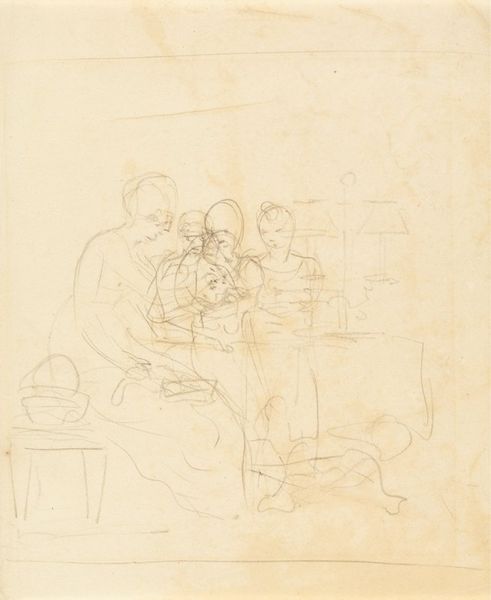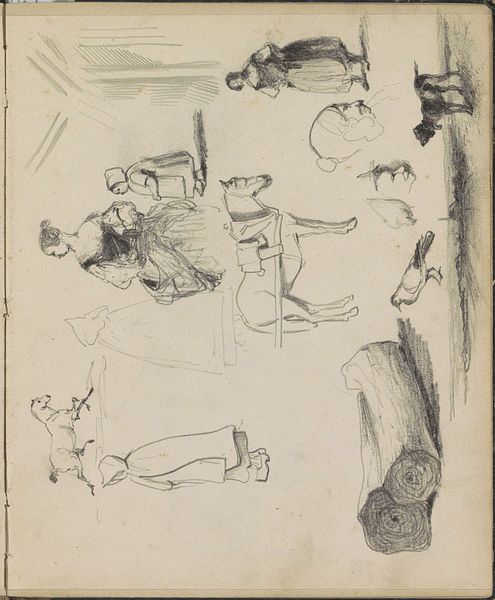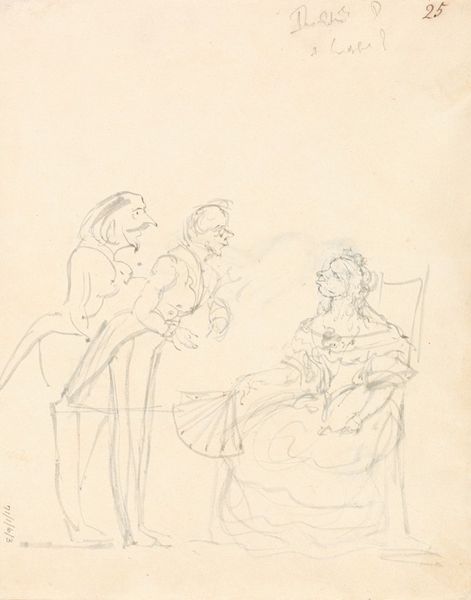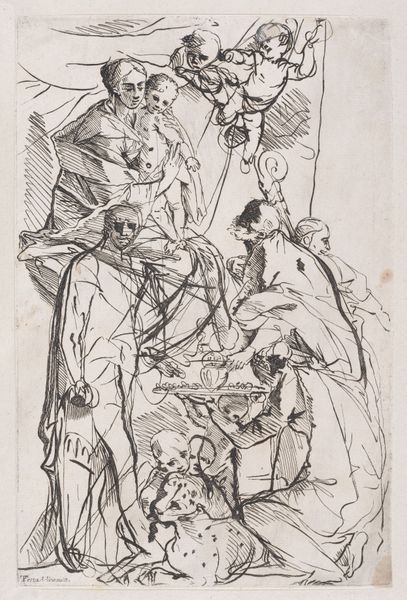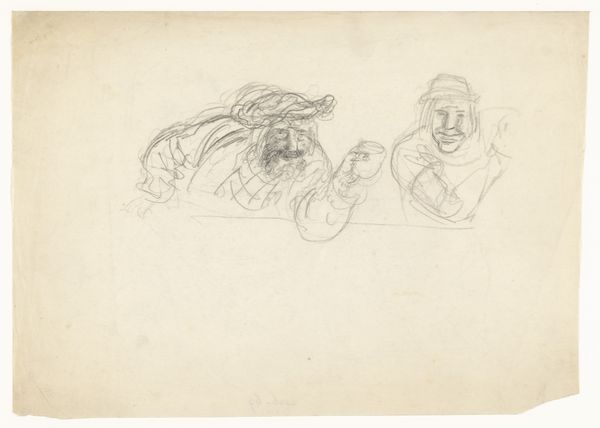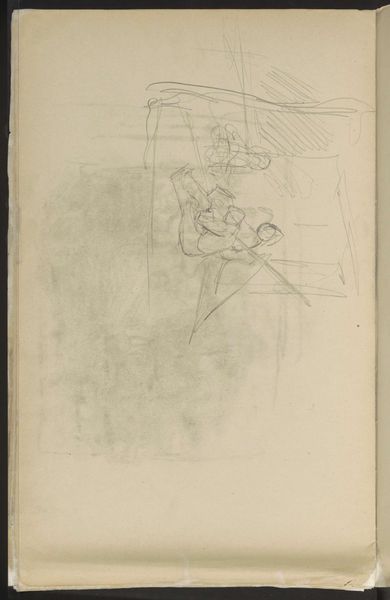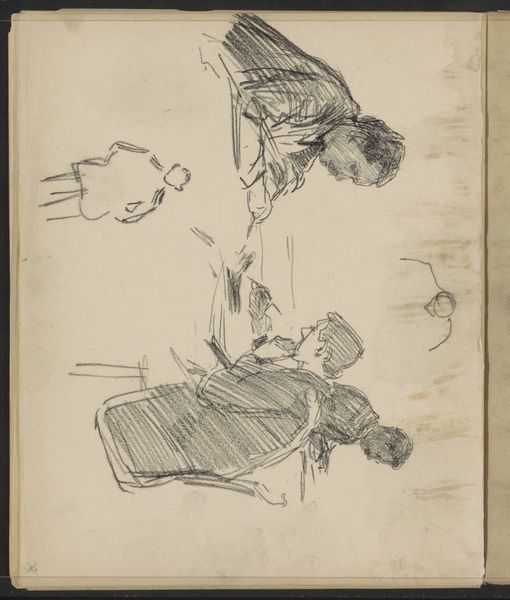
drawing, pencil
#
portrait
#
drawing
#
figuration
#
pencil
#
realism
Copyright: Public Domain: Artvee
Curator: It feels so immediate, almost a glimpse into a private moment. Editor: Exactly. What you're seeing is Winslow Homer's 1865 pencil drawing, "Study for 'Army Boots.'" It depicts several figures, likely soldiers, in various states of repose. Curator: The faces of the two figures at the top are so striking—especially the eyes! And there is so much emotional presence there, particularly in the angle of their limbs. What does Homer want to convey? Editor: It’s important to remember the context: 1865, the very end of the American Civil War. Homer worked as an artist-correspondent, and his images often documented the lives of soldiers and, importantly, the experiences of African American troops and laborers. Curator: I see the faint outlines of soldiers below, maybe resting or sleeping. It creates a very somber mood and links these men in this shared visual space. This speaks volumes about the human condition, doesn't it? These figures could signify exhaustion and maybe a silent bond between them. Editor: Absolutely, and the composition draws our eye upward to those two men staring out at the viewer. Their gaze challenges us, demanding we acknowledge their presence, their humanity in a period where both were actively denied to Black people. Curator: It feels incomplete, yet profoundly expressive. The light and shadows contribute to a story that the drawing hints at but never fully develops. It also serves as a poignant meditation on brotherhood. Editor: A “study,” of course, implies preparation. “Army Boots,” the painting related to this drawing, continues this visual story in depicting black soldiers, adding depth and context that powerfully interrogates the narrative of the Civil War. This unfinished study provides a unique window into Homer’s process, documenting Black presence. Curator: What begins as a seemingly quiet study reveals deep psychological insight into this formative and painful historical event. The symbolism and quiet energy really gets under your skin. Editor: I find it remarkable how such simple lines evoke the complexity of wartime experiences and lingering effects of slavery. It challenges us to reflect upon that era. Curator: Looking closer at the artwork made me rethink certain aspects about Homer’s perspective and legacy, as well as the period in the US that this art addresses. Editor: Precisely. This close look gives me the encouragement to do more activist work through similar analysis.
Comments
No comments
Be the first to comment and join the conversation on the ultimate creative platform.
